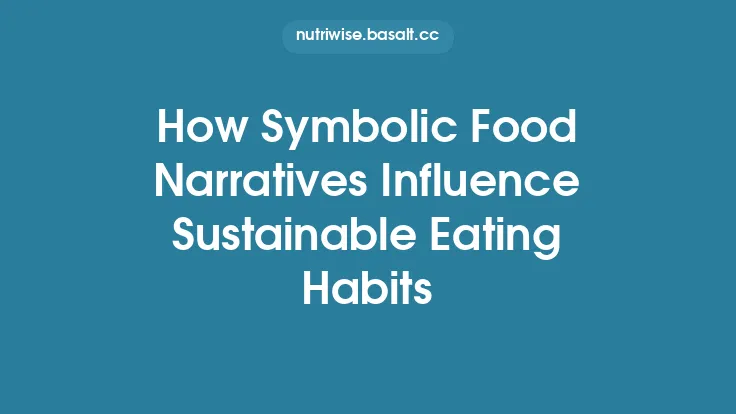Cross‑cultural food adoption has become a powerful driver of dietary diversification, enriching the nutrient landscape of populations around the world. When societies incorporate ingredients, preparation methods, and culinary concepts from other cultures, they expand the range of vitamins, minerals, phytonutrients, and essential fatty acids available in everyday meals. This broadened nutrient repertoire can help address micronutrient deficiencies, support metabolic health, and foster resilience against diet‑related chronic diseases.
The Biological Rationale for Nutrient Variety
Complementary Micronutrient Profiles
Different plant and animal species have evolved distinct biochemical pathways, resulting in unique concentrations of micronutrients. For example, leafy greens native to temperate regions tend to be rich in vitamin K and calcium, whereas tropical fruits often provide high levels of vitamin C, beta‑carotene, and potassium. By integrating foods from multiple biogeographic zones, a diet can achieve a more balanced intake of essential micronutrients without relying on fortified products.
Synergistic Interactions and Bioavailability
Nutrient absorption is frequently enhanced by the presence of complementary compounds. Iron from plant sources (non‑heme iron) is better absorbed when consumed with vitamin C‑rich foods, while the absorption of fat‑soluble vitamins (A, D, E, K) improves in the presence of dietary fats. Cross‑cultural meals that combine, for instance, legumes (iron) with citrus or fermented vegetables (vitamin C) naturally create these synergistic pairings, boosting overall nutrient uptake.
Genetic Diversity of Crops and Livestock
The introduction of foreign cultivars and animal breeds expands the genetic pool of foods available locally. This genetic diversity often translates into a wider spectrum of phytochemicals and bioactive compounds. Ancient grains such as quinoa, amaranth, and teff, when adopted outside their regions of origin, contribute novel protein profiles, higher lysine content, and unique antioxidant compounds that are not typically found in staple cereals like wheat or rice.
Illustrative Examples of Nutrient Enrichment Through Adoption
Legume Integration in East Asian Diets
Historically, many East Asian cuisines relied heavily on rice and wheat. The incorporation of soybeans, lentils, and chickpeas—originating from the Indian subcontinent and the Middle East—has added substantial amounts of plant‑based protein, folate, and soluble fiber. These legumes also supply isoflavones and saponins, compounds linked to cardiovascular health and hormonal balance.
Seaweed Adoption in Western Culinary Practices
Seaweed, a staple in Japanese and Korean kitchens, is now increasingly featured in salads, soups, and snack products across Europe and North America. Its high iodine content supports thyroid function, while its polysaccharides (e.g., fucoidan) provide anti‑inflammatory benefits. Moreover, seaweed contributes omega‑3 fatty acids (EPA and DHA) in a plant‑based form, complementing the omega‑3 intake from fish.
Introduction of Fermented Dairy from Central Asia
Yogurt and kefir, traditional fermented dairy products from Central Asian cultures, have been embraced worldwide. These foods deliver calcium, vitamin B12, and high‑quality protein, alongside probiotic strains that enhance gut microbiota diversity. The probiotic effect can improve the synthesis of certain B‑vitamins (e.g., biotin, folate) within the gut, further enriching the host’s nutrient pool.
Adoption of Indigenous Fruits in Global Markets
Fruits such as baobab, camu camu, and acerola, native to Africa and South America, have entered global supply chains. They are exceptionally rich in vitamin C, polyphenols, and dietary fiber. Regular consumption of these fruits can dramatically increase antioxidant capacity and support immune function, especially in regions where local fruit varieties are lower in these nutrients.
Physiological Benefits of an Expanded Nutrient Spectrum
Reduced Risk of Micronutrient Deficiencies
Populations that diversify their food sources experience lower prevalence of anemia, rickets, and other deficiency‑related conditions. For instance, the addition of iron‑rich legumes and vitamin C‑rich fruits can mitigate iron‑deficiency anemia without the need for supplementation.
Enhanced Metabolic Flexibility
A varied intake of macronutrients—complex carbohydrates, diverse protein sources, and a range of fatty acid profiles—promotes metabolic flexibility. This adaptability allows the body to efficiently switch between glucose and lipid oxidation, supporting weight management and reducing insulin resistance.
Strengthened Immune and Antioxidant Systems
Phytonutrients such as flavonoids, carotenoids, and glucosinolates, introduced through cross‑cultural foods, bolster the body’s antioxidant defenses. These compounds neutralize reactive oxygen species, lower systemic inflammation, and improve the function of immune cells.
Support for Gut Microbiome Diversity
Fermented foods, high‑fiber legumes, and novel plant polysaccharides act as pre‑biotics and probiotics, fostering a more diverse and resilient gut microbiome. A robust microbiome is linked to improved nutrient synthesis (e.g., short‑chain fatty acids, certain B‑vitamins) and better overall health outcomes.
Practical Strategies for Integrating Cross‑Cultural Foods
- Seasonal Rotation – Plan meals around seasonal availability of both local and imported foods to maximize freshness and nutrient density.
- Culinary Pairing Guides – Use evidence‑based pairing charts that highlight synergistic nutrient combinations (e.g., iron + vitamin C, fat‑soluble vitamins + healthy oils).
- Community Cooking Workshops – Encourage knowledge exchange by hosting cooking classes that showcase traditional recipes from different cultures, emphasizing nutrient‑rich ingredients.
- Label Literacy – Educate consumers on reading nutrition labels to identify key micronutrients contributed by unfamiliar foods.
- Home Gardening of Exotic Varieties – Support small‑scale cultivation of non‑native but climate‑adapted crops (e.g., dwarf amaranth, microgreens) to increase access to diverse nutrients.
Challenges and Considerations
Cultural Acceptance
Introducing new foods can encounter resistance due to taste preferences, religious dietary laws, or perceived unfamiliarity. Tailoring preparation methods to align with local palates while preserving nutrient integrity is essential.
Supply Chain and Seasonality
Reliance on imported foods may raise concerns about carbon footprint and price volatility. Developing regional production of nutrient‑dense crops can mitigate these issues.
Allergenicity and Food Safety
Cross‑cultural adoption may introduce allergens (e.g., nuts, shellfish) to populations with low prior exposure. Proper labeling, education, and gradual introduction can reduce adverse reactions.
Nutrient Interactions and Over‑Supplementation
While diversity is beneficial, excessive intake of certain nutrients (e.g., iodine from seaweed) can be harmful. Balanced dietary planning and periodic nutritional assessments help maintain optimal levels.
Future Directions in Global Nutrient Integration
- Biofortification of Adopted Crops – Leveraging plant breeding and gene‑editing technologies to enhance micronutrient content in newly introduced varieties.
- Digital Platforms for Recipe Exchange – AI‑driven applications that suggest nutrient‑balanced meals based on a user’s existing pantry and cultural preferences.
- Policy Support for Food Diversity – Incentivizing farmers to grow a broader spectrum of crops through subsidies, research grants, and market development programs.
- Longitudinal Cohort Studies – Tracking health outcomes in populations that have embraced cross‑cultural foods to quantify impacts on disease incidence and longevity.
By consciously embracing foods from diverse cultural origins, societies can construct diets that are richer, more balanced, and better equipped to meet the complex nutritional demands of modern life. The ongoing exchange of culinary traditions not only celebrates cultural heritage but also serves as a pragmatic pathway toward improved public health through enhanced nutrient variety.





